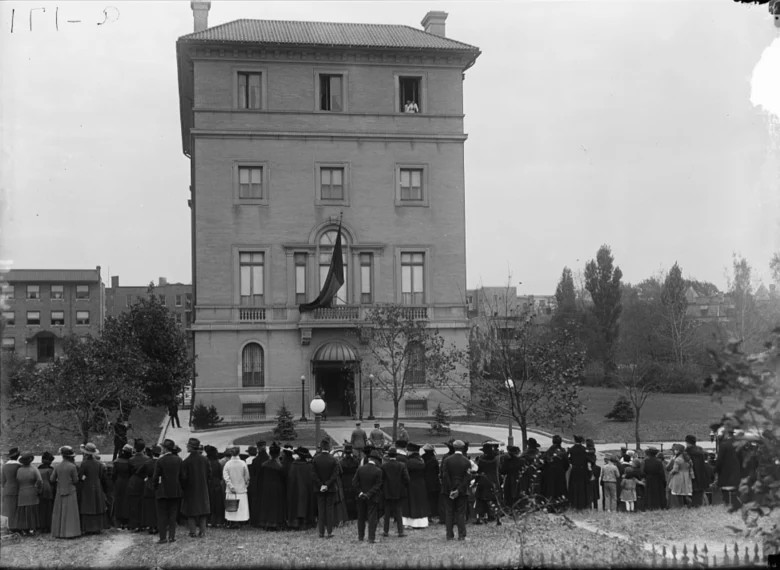The history of Mexico winds along the walls of the main staircase of 2829 16th Street, part of Mary Foote Henderson’s diplomatic enclave and once the country’s embassy.
Painted by the artist Roberto Cueva del Río, who began work on the mural in 1931, the sweeping series depicts various scenes floor-to-ceiling scenes – the Tehuantepec Festival of the Flowers; a rural scene from Ixtaccihuatl and Popocatepetl, scenes of industrial Mexico, the landing of Columbus and pre-Columbian Mexico and others.
The dramatic images grace three floors’ worth of walls and their landings, adding vivid color and life to the interior of the Beaux Arts mansion on 16th Street that is virtually undetectable from its stately, austere, exterior.
It’s a stunning display now publicly accessible in a building once shrouded in secrecy.
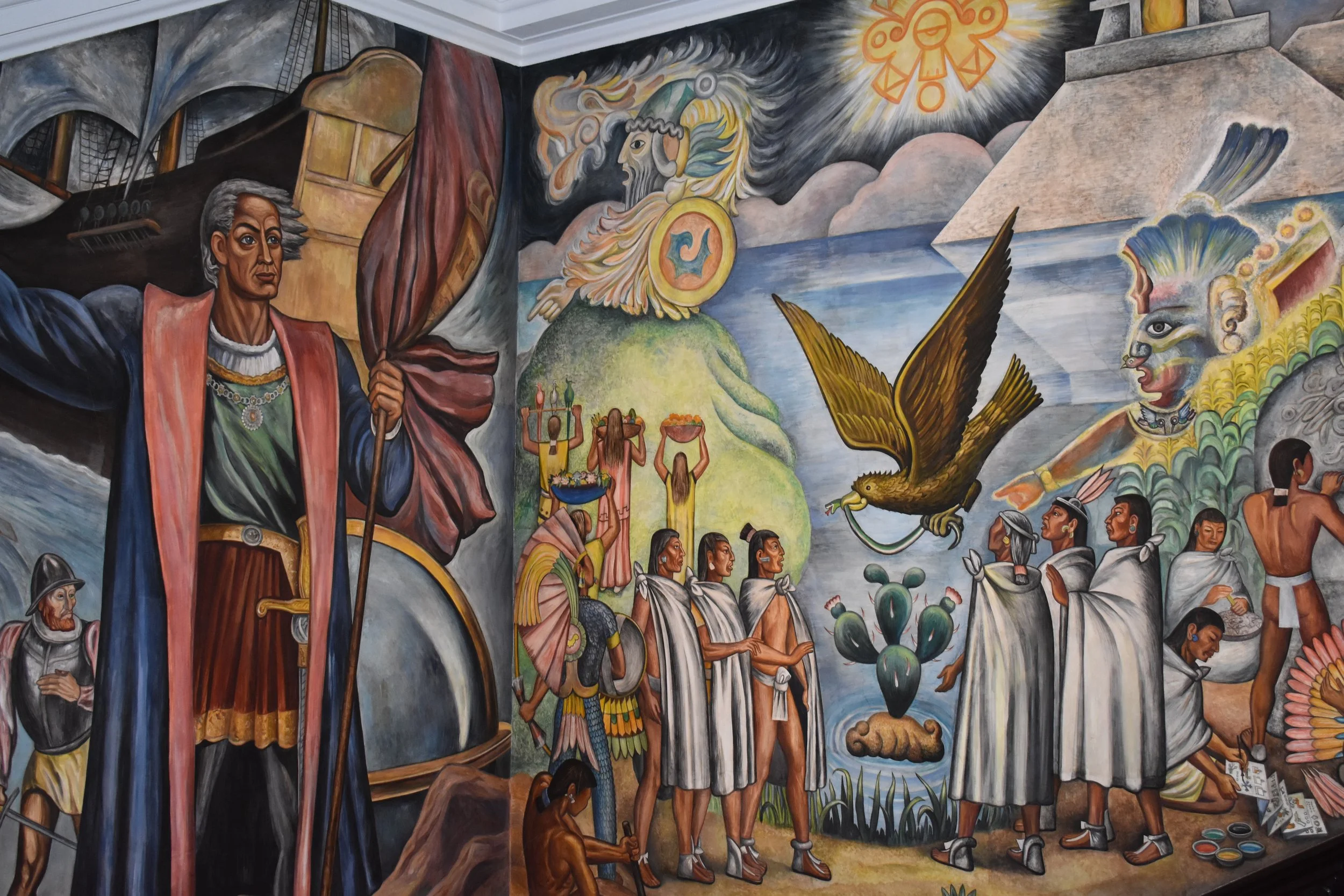
The building on 16th Street that serves as the Mexican Cultural Institute is part of a cluster of current and former diplomatic properties that still serves foreign governments, and local residents. Like its neighbor, the Former Residence of the Ambassadors of Spain, the Mexican Cultural Institute previously served as the country’s embassy, and its ambassador’s residence.
When it was built in 1910, however, none of this was the intended goal of the home.
It was common practice at the turn of the last century, even more so than it still is in some circles today, to chronicle in great detail the buying and selling of property among society’s elites. So when the land at 2829 16th Street was purchased from Mary Foote Henderson, who had already established that the many plots of land she owned would only be sold to those she deemed suitable, the neighbors were all atwitter. This home, assembled on patchworked lots purchased from several owners, was among the first such buildings of Henderson’s plans. But when it was discovered that the purchase had been made by a trust appointed by a secret owner, uncovering that new owner’s identity was all the rage.
There were hints to the possible owners in the architecture. Large rooms, with flowing spaces that allowed for ample natural light, were clearly designed for entertaining large parties; a music room, curved to enhance acoustics of the built-in pipe organ, spanned the entire width of the house. Painted decorative panels in the room were modeled after the Salle de Gardes du Roi at Chateau FontaineBleau; permission to copy them had to be granted by the French Department of Monuments. A traditional English library, immediately above the music room, featured stained glass windows to protect the books.
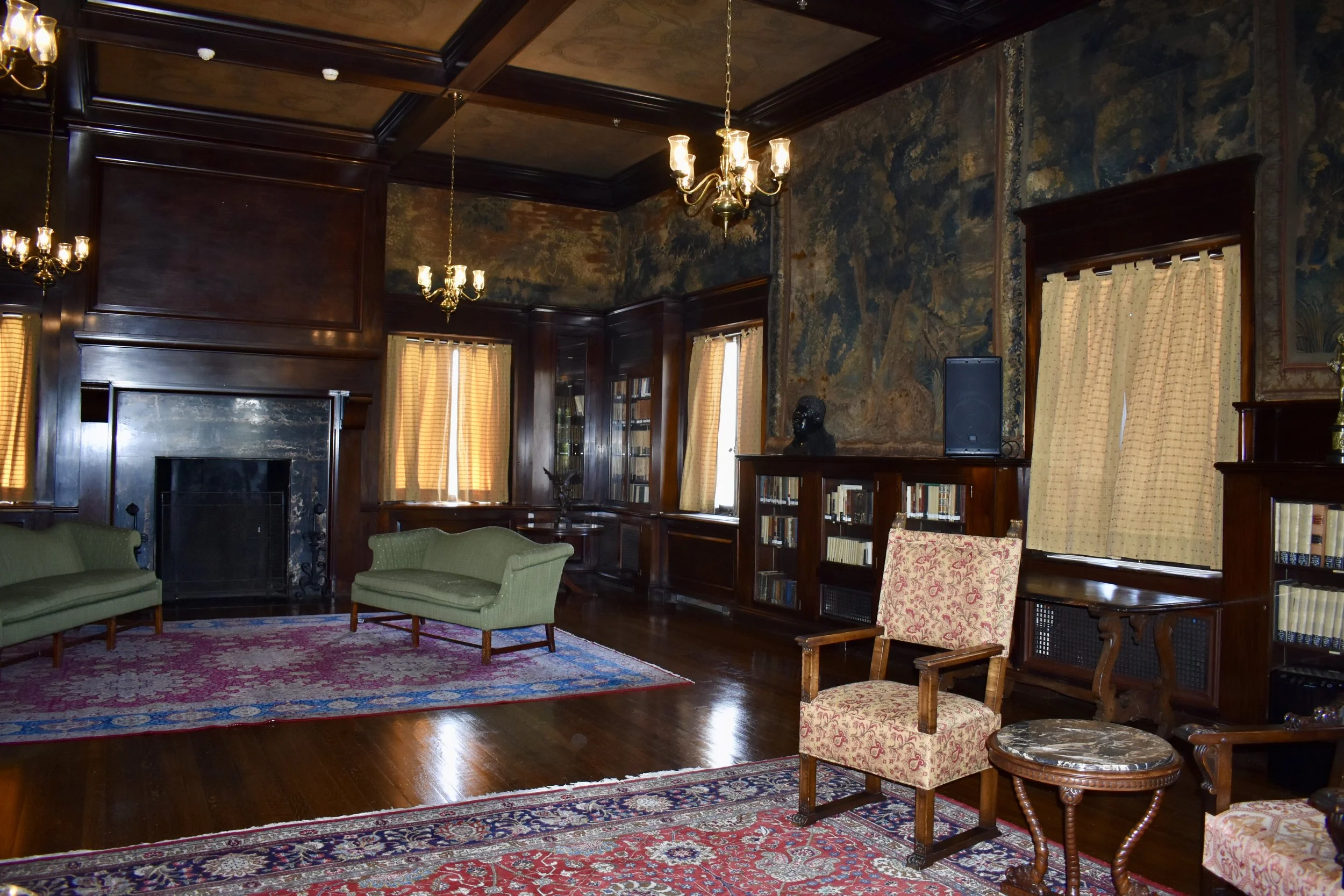
Neighbors pestered workers who either didn’t know or wouldn’t say. Repeated inquiries to the builder, Nathan Wyeth were ignored. By the time he worked on the residence at 2829, Wyeth had already designed several hospitals, the West Wing of the White House (including the first Oval Office), and a number of private homes now serving as embassies. Most likely he was used to discretion in his dealings.
A lucky few were able to secure tours of the opulent new building. Among them were Emily and Franklin MacVeagh who had moved to Washington in 1909 when Franklin was tapped to serve as President Taft’s Secretary of the Treasury. MacVeagh, an architecture enthusiast, had commissioned a beautiful home for himself and his wife in Chicago, and was less than delighted with living in one of the nearby George Totten-designed homes that had previously been commissioned by Henderson.
Legend has it that Emily and Franklin toured the fully completed and furnished home on Christmas Eve, 1911 and as Franklin marveled at the music room, the largest drawing room in Washington, the building’s facade layered by story – first Italian, then English, then French – Emily finally turned to him and said, “Well, if you like it, it’s yours.”
The mystery owner all along, Emily had kept the home’s true intention secret during its entire construction, even from her husband, for whom she had built it as a gift.
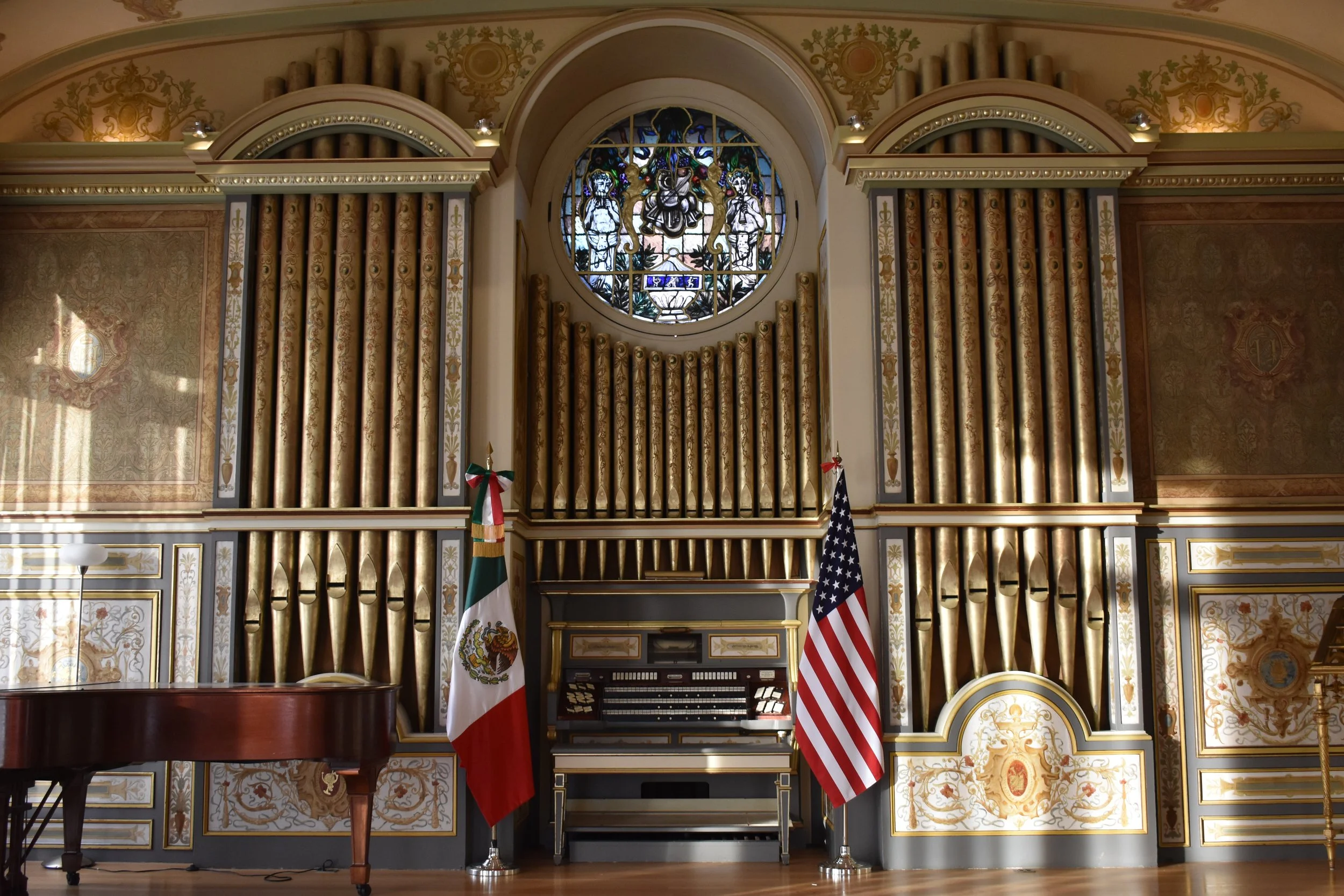
The United States and Mexico established diplomatic ties in 1822 after the US recognized Mexican independence. The State Department calls the relationship since then “intimate and often contentious.” When the MacVeaghs moved into the house in 1911, a revolution raged in Mexico. In 1914, while Emily was battling a terminal illness, Mexico severed diplomatic ties after the Tampico Incident. Ties were restored in 1917 as a heartbroken Franklin couldn’t bear to be in the home without his late wife and moved back to Chicago, lending the home first to Lord Balfour when he lead the British mission; and later to King Albert and Queen Elizabeth of Belgium when they visited the US in 1919.
In 1921, MacVeagh sold the home to the government of Mexico. By this time, Mexico was in good company, as this stretch of 16th Street already hosted several embassies, including the French, Swiss, Spanish, Cuban, Polish, and Lithuanian. (The Polish and Lithuanians are still operating their embassies from their original locations on 16th Street, making them the first and second-longest, respectively, continuously-operating embassies in Washington.)
During the 1920s, several other embassy buildings were constructed on Meridian Hill and immediately adjacent to the Mexican Embassy, including the Italian Embassy across Sixteenth Street, and the Dutch Embassy across the rear of the Mexican Embassy at Fifteenth and Euclid Streets (now the Embassy of Ecuador.)
Like many former private residences that are now embassies, MacVeagh sold the home with many of its original furnishings, some of which are still in the building today. MacVeagh requested two stipulations; first, that no significant alterations be made to the building as long as he lived. Second, that his favorite caretaker be given lifetime employment.
While the fate of the caretaker is uncertain, the Mexican government did immediately make some necessary changes to the building, including a chancery wing, garage and portico entrance. Although MacVeagh would have no doubt disapproved, given his intention to memorialize the home as it was during his time there with Emily, as is fitting, the Mexican government also filled the building with art representing the various regions of Mexico; covered the solarium with tiles depicting Mexican volcanoes and the coats of arms of the Mexican states, added a fountain, and of course, in 1933, began painting the country’s history on its walls.
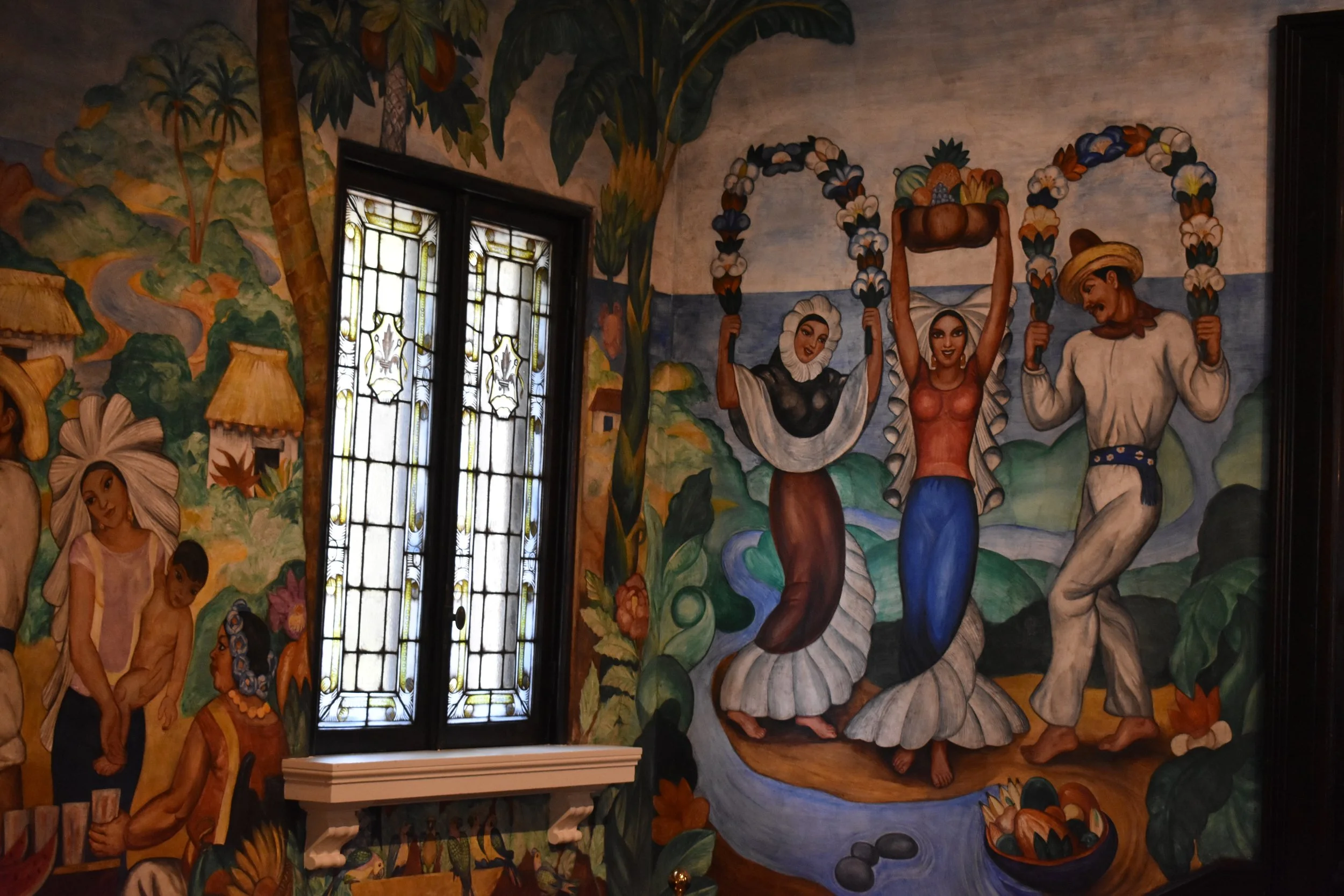
The nearly seventy years that the 2829 served as the Mexican embassy were eventful ones.
In 1962, 60 Cuban refugees picketed the embassy peacefully to appeal for strong economic and diplomatic sanctions against the Castro regime. In 1975, an anti-Castro Cuban organization called El Alacran (The Scorpion) took credit for bombing the then-Mexican embassy. “A Latin American government that recognizes the Castro regime is considered a traitor to the enslaved Cuban people,” read a note slipped under the door of the Associated Press office following the bombing. The bomb exploded early Saturday morning, caused minor damage and had no reported injuries.
There were lighter moments, too, of course. The protests were mixed, as they often are at embassies, in between cultural events and lavish concerts. In 1948, a not-quite five-year-old boy named Charlie wandered away from his kindergarten and found his way to the embassy, where he was given milk and cookies. Despite the housekeeper’s gentle coaxing, he refused to give his name, only doing so when the housekeeper reluctantly called the police.
In 1958, the Texas State Society paid homage to France, Spain and Mexico, the three countries whose flags once flew over the Lone Star State, with an embassy tour led by a group of Texas Congressional wives. First Vice President of the Texas State Society of Washington, D.C, Barry Brown, who serves as the group’s historian, searched their archives and found that the ambassadors were later repaid for the hospitality with a brunch at the Mayflower Hotel, entitled the Texas Heritage Brunch, which was attended by, among others, Speaker Sam Rayburn and Senate Majority Leader Lyndon B. Johnson, who “spoke on the great Texas heritage.”
“I had never heard of this type of event by TSS and it hasn’t happened in the 30 years I’ve been in DC,” Brown told Diplomatica recently. “I’d like to bring it up for consideration to perhaps recreate a modern-day version.”
Such a feat is of course more easily accomplished among immediate neighbors. However, what previously served as the French Embassy on 16th Street is now a luxury apartment complex. The Spanish embassy is a cultural center. And, in 1990, after the Mexican embassy moved downtown, 2829 stopped serving as the country’s official legation, and became a home for Mexican art.
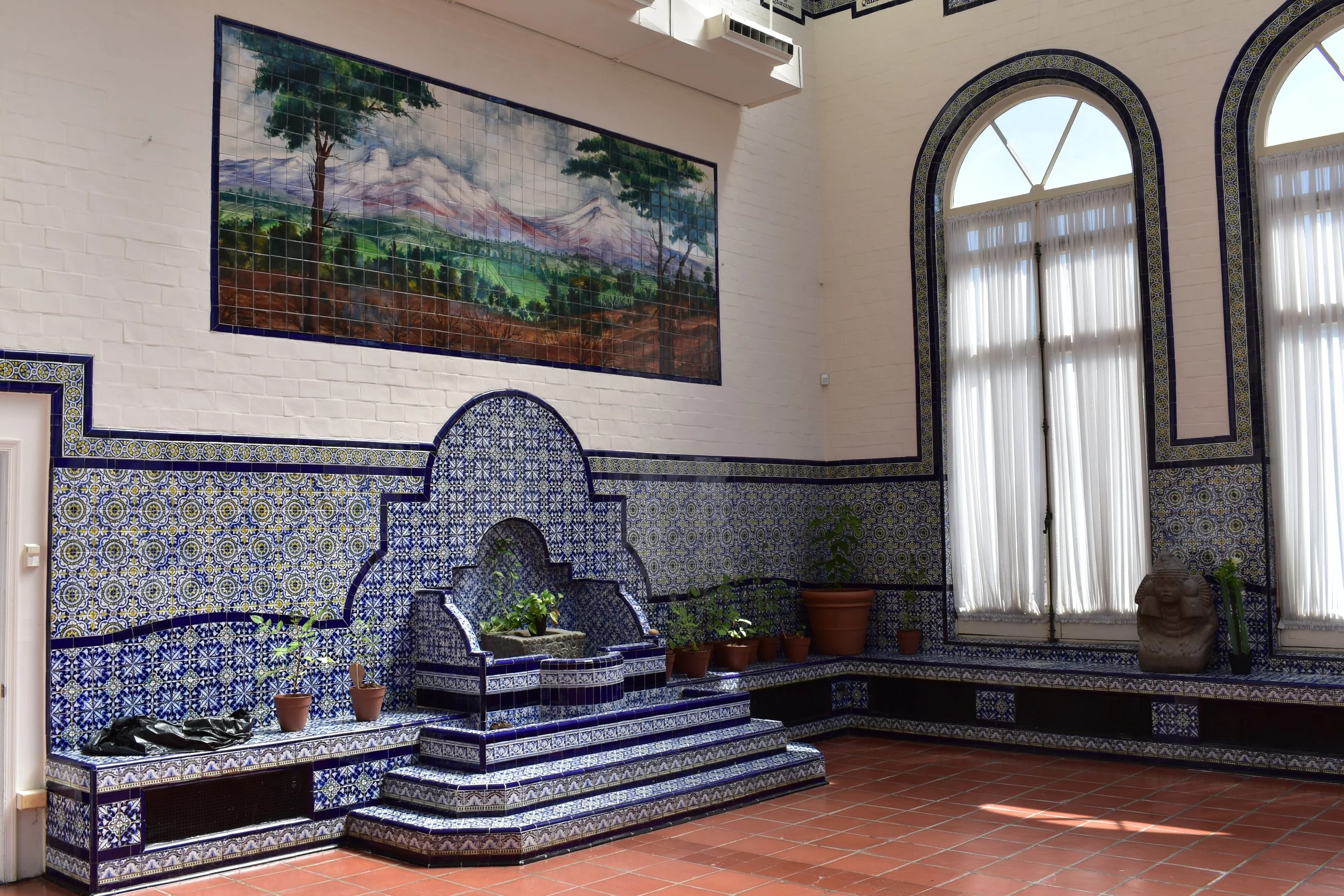
The parties at the Mexican Cultural Institute are still every bit as lavish as reports of those thrown by the MacVeaghs more than a century ago. The food is delicious, the music is excellent and mixing and mingling in their conservatory is a quintessential Washington experience.
But a better kept secret is that an invitation isn’t required to visit the building, or its displays.
With public hours six days a week, and seemingly endless rotating as well as permanent exhibits, the Mexican Cultural Institute is not just a former embassy but an active art gallery that is free and open to the public. No RSVP is required for general visits, simply go to the gate, ring the bell and tell the guard you’d like to see the gallery. Self-guided tour materials, including a lovely brochure on the murals, are available in the lobby. As a courtesy, group tours should be requested in advance. (The institute often hosts special events that require a free ticket.)
How to Visit: The Mexican Cultural Institute is open to the public Monday-Friday from 10:00 am to 6:00 pm and Saturday from noon until 4 pm. It’s serviced by the Columbia Heights Metro and multiple bus lines, as well as nearby bike racks and bikesharing.
